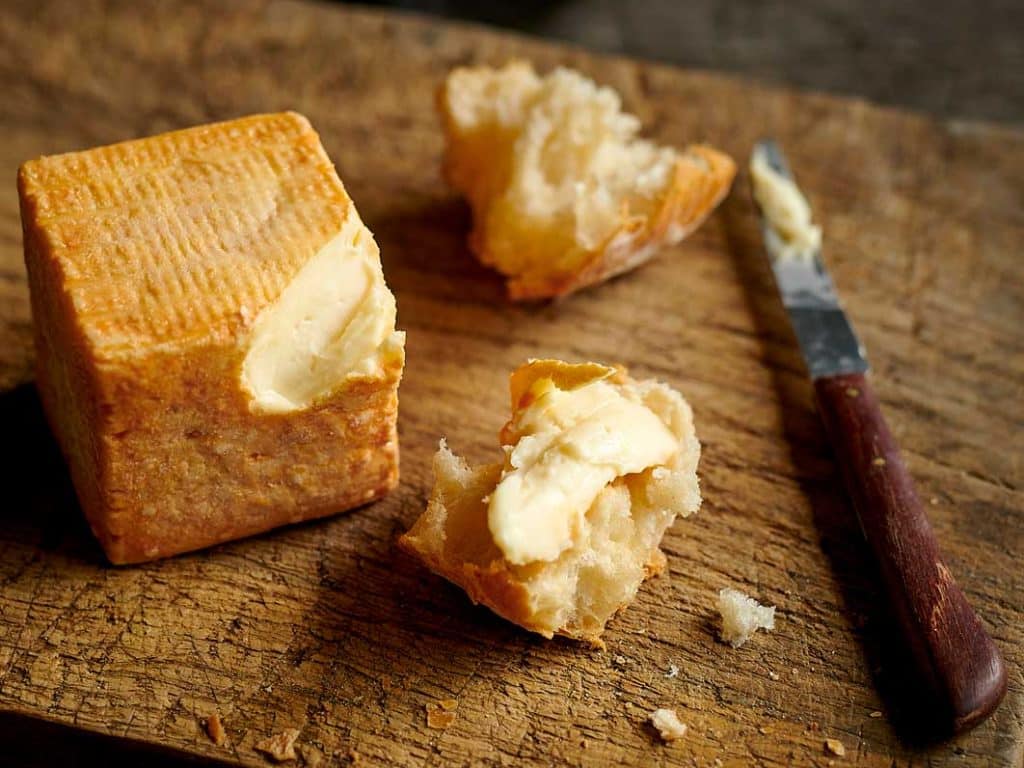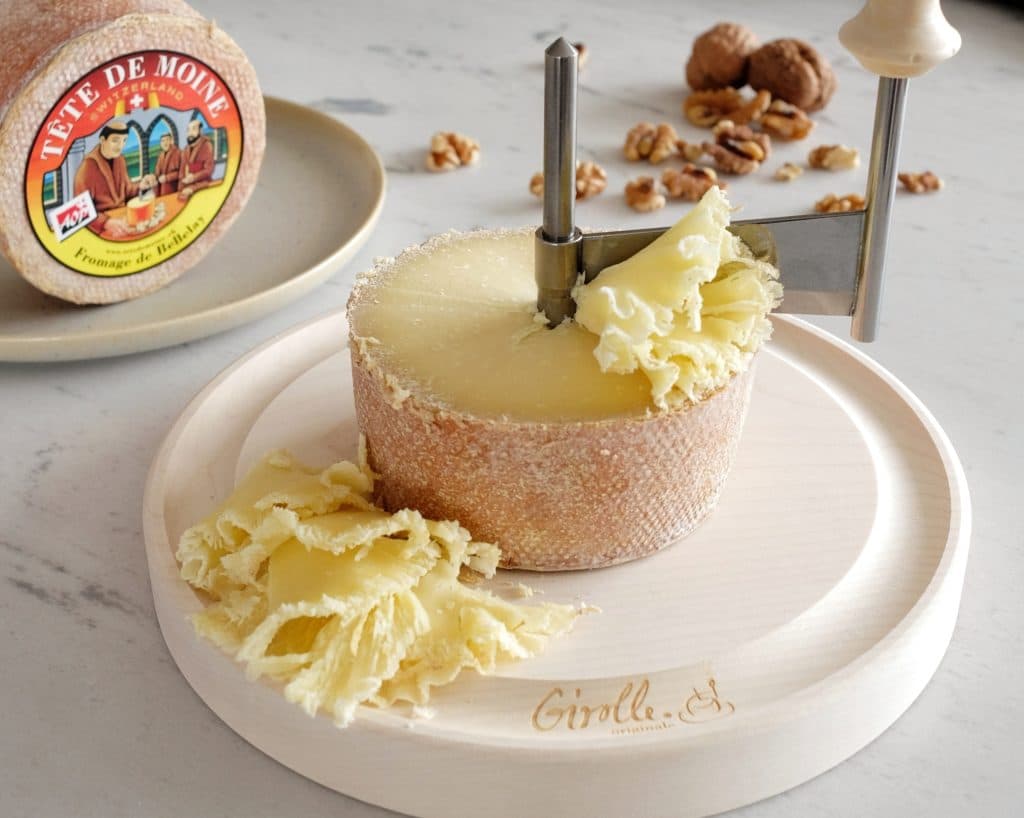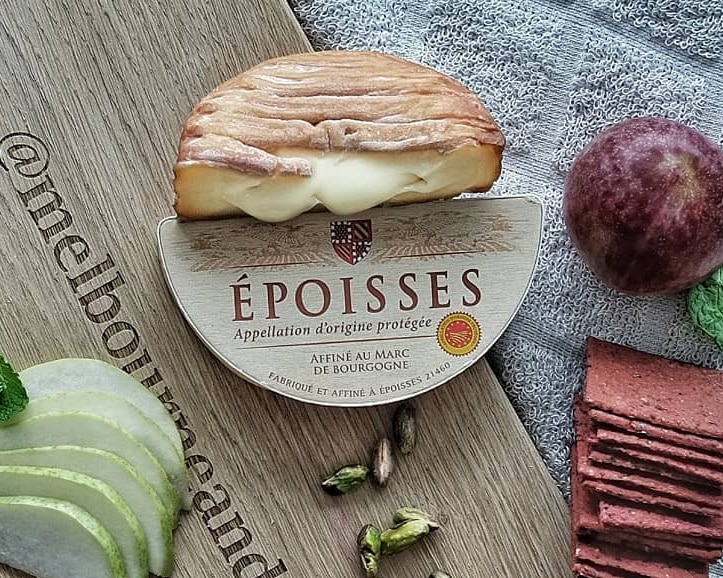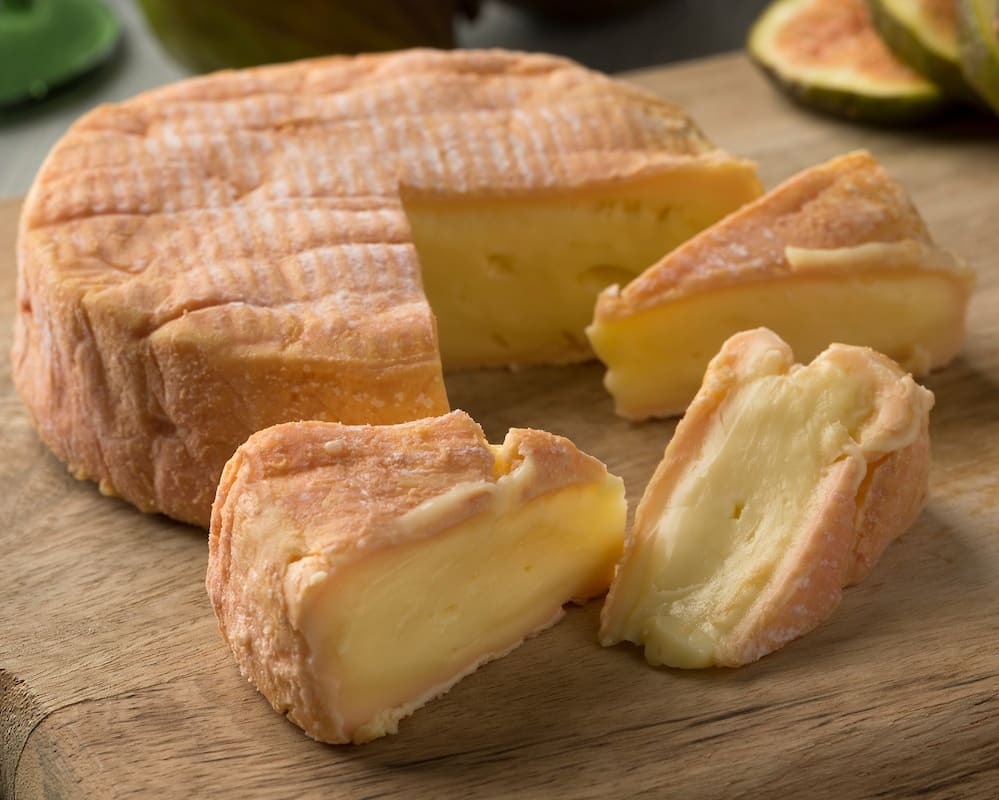The Belgians definitely know their way around monastic soft washed rind cheeses. And, without a doubt, Herve is their most famous export.

Where does Herve come from?
Herve is a soft washed rind monastic cheese that is produced from raw or pasteurised cow’s milk that dates back to the 13th century. It gets its name from the ancient town of Herve, which is at the centre of Pays de Herve. This region is the geographical area of production and ripening of the cheese.
How is Herve made?
Each square brick of Hervé is made using fresh local cow’s milk that is gently heated before rennet is added. The resulting curds are cut into very small pieces and part of the whey is drained.
Afterwards, the cheesemaker pours the curds into the signature square moulds where they drain overnight without any mechanical pressing. Finally, they remove the formed cubes and rinse them in a brine bath.
The cheeses are then ripened in a cellar with constant temperature and humidity during which time they are washed in a beer solution and turned twice a week. This is repeated for between 4-6 weeks
How to serve Herve
The most common version of this cheese is shaped as a small brick and has a glossy, sticky orange-brown rind. Its paste is mostly soft and with a slightly chalky centre. When young, Herve’s aroma is mild and its flavour sweet. As the cheese matures, its aroma becomes yeastier and it develops a spicier flavour profile.
Since it is fully flavoured, Herve is best enjoyed with dark bread and beers. Actually, It is one of the most popular cheeses in Belgium.
Thank you for reading
Thank you for reading this post about yet another amazing artisanal cheese. Have you tried this cheese before? Drop us a comment below with your thoughts.
If you enjoy learning about new cheeses, you can subscribe to our newsletter below. You will hear from us about once a week as we share new cheese profiles with you.
Finally, keep scrolling to find some more cheeses and recipes that have been recommended for you. Keep it cheesy!


